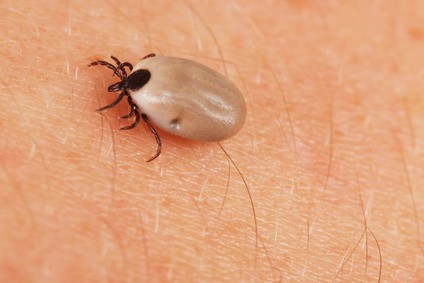Have you ever wondered how small tick-borne diseases can be such a big hazard to their host……? If not go through how dangerous tick can be to its host life.
Normally tick-borne diseases pass through a life cycle that consists of 4 stages throughout their life span. It all begins with an egg, a six-legged hatchling, followed by an eight-legged nymph, and finally into an adult.
After coming out of the egg, the ticks completely depend on blood for their survival through all the stages of their life cycle. Usually, the ticks take nearly 3 years to complete their entire life cycle, and generally, the life of a tick-borne disease ends because of the unavailability of hosts for their feed.
Though some species of ticks like for example, the brown dog tick prefer to feed on the same host during all the stages of their life cycle, they also feed on various other mammals, reptiles, birds, and amphibians.
Ticks trace out their host by detecting the odor and breath, or body heat, and vibrations. Generally, tick chooses a spot to wait for its host which is a well-used path by the hosts. They wait by resting on the tips of the grasses and shrubs. Ticks don’t fly or jump into the host. They just wait for their host in a position called “Questing”.
During questing, they cling onto leaves or grass by their third and fourth pairs of limbs and the first pair of the leg will be stretched out to climb on the host. When the host passes by, it quickly climbs on it. Some of its species will attach quickly. Whereas others move around looking for areas where it is easier for it to feed on.
HOW DO THIK-BORNE DISEASES SPREAD ILLNESS?
- Based on the species and the stage of the life cycle, the feeding process can go from 10 minutes to 2 hours. After finding a perfect spot, it holds on to the skin of the host and cuts the skin surface.
- Once the surface of the host skin is cut open, it inserts its feeding tube into it. Most of the species secrete a substance to attach itself to the host firmly.
- Ticks can also secrete a small amount of anesthetic substance that is already present in its saliva so that the host cannot feel the presence of the tick-borne diseases if it is attached in a sheltered position it can go unnoticed.
- The feeding will go on for several days and if the host’s blood is found to be infected, the tick will ingest the pathogens with the blood.
- While feeding, a small amount of saliva from the tick-borne diseases might also enter the body through its skin. If there is the presence of pathogens found in the saliva, it can be transmitted into the host’s body easily.
After feeding, most of the ticks will fall and prepare themselves for the next stage in the life cycle. There is a high chance of transmission of the disease acquired by the tick-borne diseases to the new host it is going to feed on.
At Genesis diagnostics we conduct almost all the medical testings that your physician would refer you to under go.


No responses yet